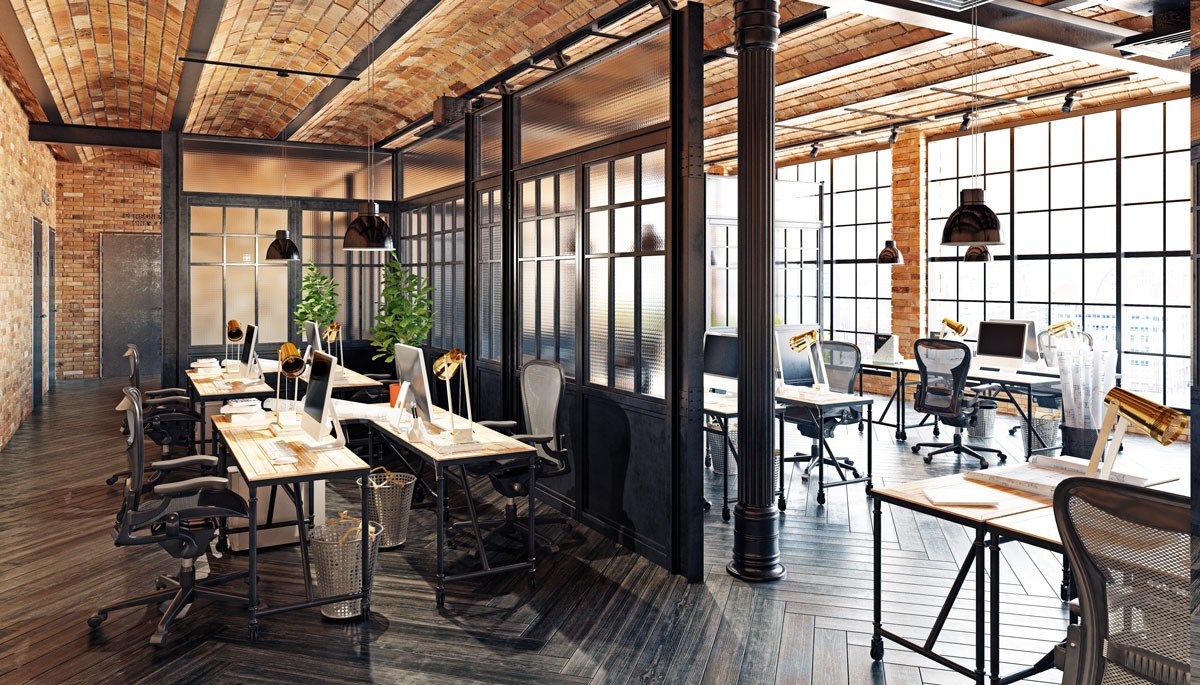Sufficiently large work surfaces
There are clear specifications for the minimum size of work rooms. They are in the technical rules for workplaces, which have been in force since 2013 and were drawn up by the Federal Institute for Occupational Safety and Health and the Federal Ministry of Labor and Social Affairs. The rules are substantiations of the Workplace Ordinance (ArbStättV) of 2004.
It contains specifications for the following areas:
- Areas of movement for employees in the workplace
- areas for traffic routes
- Storage space for work equipment, fixtures and equipment
- Functional areas for all operating or usage states of work equipment, built-in components and facilities
- Areas for safety distances
For the individual employee, the under ASR A1.2 5.1.2. prescribed work surfaces. Here it says: “The movement area must be at least 1.50 m². If this is not possible for operational reasons, the employees must have a movement area of at least 1.50 m² in the vicinity of the workplace. In addition, there are other requirements. If, for example, several workstations are arranged directly next to each other, the width of the movement area must be in accordance with ASR A1.2 5.1.4. be at least 1.20 m at each workplace.
A detailed overview of all other movement areas, traffic routes, safety distances and functional areas can be found in the relevant sections of the technical rules for workplaces.
Lighting affects productivity
The second important factor when furnishing an office is the lighting. It essentially fulfills three tasks:
- facilitating the gathering of information
- maintenance of well-being
- promoting concentration
This works best with a healthy mixture of daylight, indirect and direct lighting and individual workplace lighting. The lights should be arranged in such a way that there are as few shadows as possible and the contrasts are soft and flowing.
Furthermore, the direct workplace lighting should correspond to the task. A very bright light with an optimized angle of incidence is used for difficult manual work. With ceiling lighting, on the other hand, a balanced mixture of direct and indirect light is important. Here, for example, professional ceiling lights with a mirror grid are used. The light ideally has a color temperature of more than 5,000 Kelvin. It has a stimulating effect and promotes concentration.
In addition, other things such as the color rendering index and the illuminance should be taken into account when putting together the lighting. You can find specifications for this in the Technical Rules for Workplaces under ASR A3.4.
Tip: Opt for office furniture with non-glare surfaces. Also, avoid dark desks. Otherwise, the eye has to keep adjusting between the bright screen and the dark background. The result is fatigue.
Robust materials for the office floor
Since many people are out and about in offices, the furnishings are subject to permanent wear and tear. Surfaces in particular must be correspondingly robust. When choosing desks, durable materials such as melamine resin and real wood are recommended.
The same goes for floors. Here, not only abrasion from shoes but also wear and tear from office chairs must be taken into account. Hard-wearing PVC coverings such as Mipolam Troplan are therefore worth considering. They also meet the requirements of the technical rules for workplaces under ASR A1.5/1.2 in terms of slip resistance.
Office chairs should be ergonomic
It has been proven that constant sitting and lack of exercise have a negative impact on your health. That is why office workers in particular need an ergonomic and flexible chair. It adapts to the physical conditions, encourages movement and enables pain-free and healthy sitting. The following properties are particularly important:
- Height adjustability
- Flexible backrest (ideally with resistance adjustment)
- Adjustable armrests
It is also important that the chair is optimally adjusted. The resistance of the flexible backrest should be chosen so that you can easily feel it when you lean back. The armrests should be an extension of the tabletop and your arms should rest on it at a 90° angle. The chair height should be selected so that the upper and lower legs also form a 90° angle.
Tip: If you are looking for more information about office chairs, take a look at this article.
In addition to an ergonomic chair, a height-adjustable desk is recommended. It can be adjusted so that the arms rest on it at a 90° angle. Electrical versions are particularly practical. This allows the desk to be extended so far that you can also stand at it.
